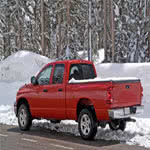Come tax season, it’s important for Americans to know what they can or can’t write off. Including the right deductions can greatly benefit you in the year to come, as it can increase your return or minimize the amount you owe. Small business owners must pay just as close attention to their business taxes and qualifying exemptions as they do their personal returns – if not more so.
The U.S. government and the IRS value small businesses, so there are some tax benefits aimed directly at small business owners. One example is Section 179, which allows owners to write off necessary equipment purchases, leases or loans. According to section179.org, this benefit is specifically intended to encourage small business owners to invest in themselves rather than putting off needed equipment purchases.
A survey of more than 1,100 small business owners conducted by the National Small Business Association found that Section 179 is the most popular tax deduction in the business community. Even so, just 34 percent of respondents said they take advantage of the small business tax benefit. Furthermore, this benefit was indicated as the second-most vital to stimulating business growth, after deductions for self-employed health insurance.
How Section 179 Works
Equipment you purchase or otherwise finance for your business qualifies for the Section 179 benefit. The maximum you can write off is $500,000, as long as you spend less than $2 million on equipment. After that point, the amount you qualify for is reduced with every additional dollar you spend over that amount. This rule is put in place specifically to target small and medium businesses, rather than large corporations.
For equipment you purchase to qualify for the deduction, it needs to be bought specifically for the business, or at least used by the business more than half the time. If you purchase or finance something mostly for business use, but you also get some personal gain from it, you’ll need to do a simple math problem to determine how much of the cost is eligible to be a tax write-off.
First, determine how much the item is used for business needs. Then multiply that percentage by the total cost of the item. For example, if you buy a $30,000 vehicle for company use 75 percent of the time, and personal use the remaining quarter of the time, you can write off $22,500 of the purchase.

How to Maximize Your Bonus Depreciation Benefits
Some years, small business owners are lucky enough to take advantage of both the Section 179 benefit as well as bonus depreciation. This year is one of those years, with the deduction being offered at 50 percent of the cost of the equipment for items put in use in 2015, 2016 or 2017. Entrepreneur pointed out that this percentage will drop to 40 percent in 2018 and to 30 percent in 2019.
Bonus depreciation is similar to Section 179, in that it lets you write off business purchases for the year. Unlike Section 179, which applies to all business purchases, bonus depreciation is only applicable to new, not used, equipment purchases.
For businesses that qualify for both, it’s common to first deduct anything eligible under Section 179, then move onto the Bonus Depreciation credit.
Since this benefit will still be available at 40 percent for equipment installed in 2018, consider investing in the latest essentials for your business this year. By working with an alternative lender, you can make the purchase without taking too much out of your business savings and still be eligible for the write-off during next year’s taxes.
What Equipment Qualifies for Section 179?
For equipment to qualify for Section 179, it needs to be purchased and used during the tax year you’re filing for. So, this year, if you bought something in 2016 or earlier, it doesn’t qualify. Additionally, if you bought it in 2017 but still haven’t made use of it, it’s not eligible.
That said, if you did buy and use the following types of equipment, be sure to include them on your tax return:
- Office essentials, including furniture and equipment.
- Computers and off-the-shelf software, which basically means you can’t write off any software that was custom made for your company.
- Vehicles that are more than 6,000 pounds.
- Machines and other equipment bought for business use.
- Tangible personal property that is used for business. This might include items attached to a property that isn’t a structural component of that property, like a counter at a grocery store, a pump at a gas station or a printing press, the IRS explained. It can also include livestock, machinery, and gasoline storage tanks.
If you’re unsure of whether something you bought will qualify, don’t hesitate to ask your tax preparation service or accountant. Section 179 sustains alterations to its guidelines on a regular basis, and Section179.org noted that sometimes, it changes without notice mid-year. It’s entirely possible that an item that didn’t qualify in a previous year, does now.
It pays to be prepared for tax season. Look back at your records for the past year to determine whether any of your purchases or leases qualify for Section 179 or the Bonus Depreciation credit. Additionally, make sure you remain organized throughout the coming year, so you can head into next year’s tax season confidently knowing what deductions you’re eligible for.









